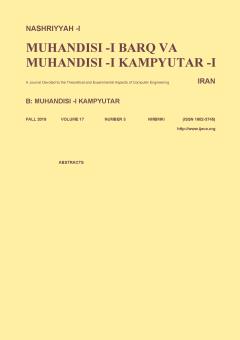-
-
List of Articles
-
Open Access Article
1 - Cautious Classification of Hyper Rectangular, Hyper Circular, and Hyper Oval with a Maximum Symmetric Margin Relative to the Data Edge
Yahya Forghani M. Hejazi H. Sadoghi Yazdi -
Open Access Article
2 - Quality of Service Aware Service Composition Method Using Biogeography-Based Optimization (BBO) Algorithm
S. Saligheh B. Arasteh -
Open Access Article
3 - Efficient Document Partitioning for Load Balancing between Servers Using Term Frequency of Past Queries
Reyhaneh Torab Sajjad Zarifzadeh -
Open Access Article
4 - Family of Variable Step-Size Affine Projection Adaptive Algorithms in Diffusion Distributed Networks
Mohammad S. E. Abadi E. Heydari -
Open Access Article
5 - Propose a New Clustering Algorithm for Data Transmission in Wireless Sensor Networks by Using Apollonius Circle
Sh. Pourbahrami E. Khaledi Alamdari L. Mohammad Khanli -
Open Access Article
6 - An Efficient Approach to Reduce Energy Consumption in Internet of Things Routing
M. Asgari M. Fathy Mohammad Shahverdy M. Soheili Nayer -
Open Access Article
7 - SDDNA: Sign-Digit Coding for Mapping Digital Data in DNA Data Storage
میثم اللهی رودپشتی S. Alinezhad -
Open Access Article
8 - Diagnosis of Attention-Deficit/Hyperactivity Disorder (ADHD) based on Variable Length Evolutionary Algorithm
M. Ramzanyan Hussain Montazery Kordy
-
The rights to this website are owned by the Raimag Press Management System.
Copyright © 2017-2026







